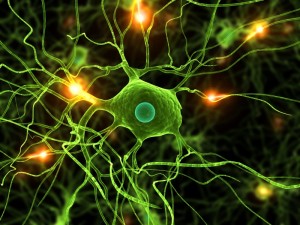Abstract
Myelin is required for the function of neuronal axons in the central nervous system, but the mechanisms that support myelin health are unclear. Although macrophages in the central nervous system have been implicated in myelin health1, it is unknown which macrophage populations are involved and which aspects they influence. Here we show that resident microglia are crucial for the maintenance of myelin health in adulthood in both mice and humans. We demonstrate that microglia are dispensable for developmental myelin ensheathment. However, they are required for subsequent regulation of myelin growth and associated cognitive function, and for preservation of myelin integrity by preventing its degeneration. We show that loss of myelin health due to the absence of microglia is associated with the appearance of a myelinating oligodendrocyte state with altered lipid metabolism. Moreover, this mechanism is regulated through disruption of the TGFβ1–TGFβR1 axis. Our findings highlight microglia as promising therapeutic targets for conditions in which myelin growth and integrity are dysregulated, such as in ageing and neurodegenerative disease2,3.
Main
Myelin ensheathes neuronal axons to ensure their health and rapid propagation of electrical impulses to support central nervous system (CNS) functions, for example, cognition. Learning and memory involve the formation of myelin and require myelin to be of good structural integrity. Myelin layers are compacted to a thickness proportional to the axon diameter4; however, with ageing and in neurodegenerative disease, disruption of these myelin properties occurs through hypermyelination. Enlarged areas of uncompacted myelin (where myelin grows) leads to myelin that is thicker, unravelling and forming protrusions (termed outfoldings), and loss of myelin integrity through degeneration also occurs in these contexts2,3,5. These myelin changes lead to impaired cognition in mice and predict poor cognitive performance in aged nonhuman primates and humans6,7,8,9. However, the fundamental mechanisms that coordinate appropriate formation, growth and integrity of CNS myelin are unclear. Recent research has implicated a population of CNS-resident macrophages, microglia, in this process. Myelination and the generation of myelin-forming oligodendrocytes are impaired following microglial depletion through loss of function of the pro-survival colony stimulating factor 1 receptor (CSF1R)1. However, this approach also targets CNS-resident border-associated macrophages (including perivascular macrophages) and blood monocytes. Therefore, it is unclear which macrophage populations regulate myelin, and the specific involvement of microglia in myelin formation and health is unknown.
Microglia are dispensable for myelination
To address these questions, we utilized a recently developed transgenic mouse model in which the Fms intronic regulatory element (Fire) super-enhancer of the Csf1r gene (FireΔ/Δ; Fig. 1a) is deleted. This deletion leads to an absence of microglia from development (when they normally emerge) through to adulthood, whereas other CNS macrophages are present10,11. These mice do not have many of the confounding issues that occur in other microglia-deficient models, such as developmental death, bone abnormalities and absence of CNS perivascular macrophages and monocytes10. Using the microglia marker TMEM119, we confirmed that microglia were depleted in the largest white matter tract of the brain, the corpus callosum (Fig. 1b). The few IBA1+ macrophages retained in FireΔ/Δ mice were positive for the perivascular macrophage marker LYVE1 (Fig. 1c,d). Moreover, the presence of these cells was confirmed by the observation of CD206+ cells adjacent to CD31+ blood vessels (Extended Data Fig. 1a). Perivascular macrophage densities were not significantly altered in FireΔ/Δ mice at this time point (Fig. 1e) or at older ages (Extended Data Fig. 1b,c) despite the reduced expression of CSF1R (Extended Data Fig. 1d–f). Similar astrocyte numbers (GFAP+SOX9+) were observed in the corpus callosum of FireΔ/Δ mice and Fire+/+ littermates (GFAP+SOX9+ cells; Extended Data Fig. 1g,h). Notably, at an age when myelination is underway (postnatal day 25 (P25) to P30), FireΔ/Δ mice had generated mature oligodendrocytes (OLIG2+CC1+) (Fig. 1f,g), which formed a similar proportion of the oligodendrocyte lineage (OLIG2+) as in Fire+/+ littermates (Fig. 1h). Myelin was formed in FireΔ/Δ mice, as indicated by the expression of the myelin proteins MAG, MBP, CNPase, MOG and PLP in the corpus callosum (Fig. 1i and Extended Data Fig. 2a–c) and the cerebellum (Extended Data Fig. 2d,e). Ultrastructural analysis confirmed that myelination proceeded in FireΔ/Δ mice (Fig. 1i), with no significant difference in the number of myelinated axons compared with Fire+/+ mice (Fig. 1j) regardless of axon diameter (Fig. 1k). Our results indicate that microglia are dispensable for oligodendrocyte maturation and developmental myelin ensheathment. This finding is in contrast to previous attributions of these functions to microglia following depletion of all CNS macrophage populations…







